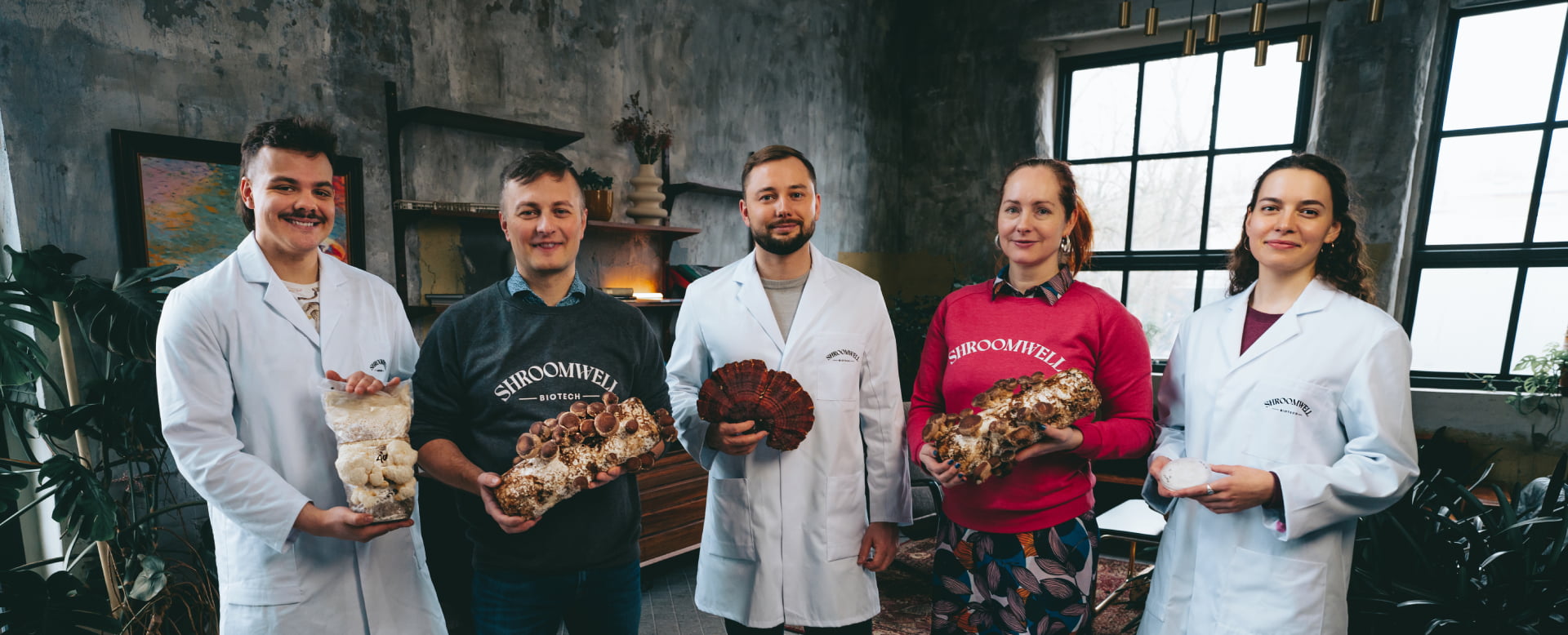BIOTECH

Bio - and Environmental Technologies
Shroomwell Innovation aims to empower the world through mycotechnology that leaves a net positive effect on the ecosystems we share and thrive in. We conduct applied research in forestry, mycoremediation, health, and nutrition. Our mycological competence center is located next to Tallinn Technical University (Taltech) in Estonia. It includes a vertical mushroom farm and high-tech laboratory for scientific and analytical services. In South-Estonia, Tõrva, we operate an industrial scale vertical farm for mushrooms. Overall in Estonia, Sweden and USA we conduct research and outdoor growing on hundreds of hectares of forests.

Current projects
- Indoor cultivation of gourmet and medicinal mushrooms
- Outdoor cultivation of parasitic fungi on living trees
- Outdoor cultivation of saprophytic fungi on dead tree stumps
- Root rot (Heterobasidion spp.) control project
- Outdoor cultivation of mycorrhizal fungi
- CO2 sequestration project for afforestation
- Mycomat project, eliminating oil and chemical environmental pollution, improve soil fertility, revive desertified areas, improve the water regime, an alternative to peat reserves as a growing substrate and also soil recovery after forest fires
Read a summary of medical mushroom health claims and research articles

Strategic development centers at the global intersection of forests and civilization
- Estonia, the head office – conceptualization of biological growth models and operational practices. Initial implementation and optimization.
- Sweden – science-based applied research, applied accelerator. Testing initial concepts and conducting documented research required for scaling.
- Maine, USA – business scaling. Access to forest and proximity to advanced end market.